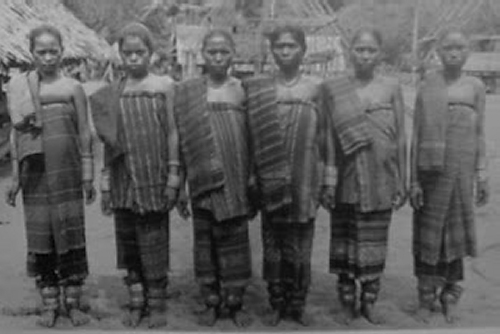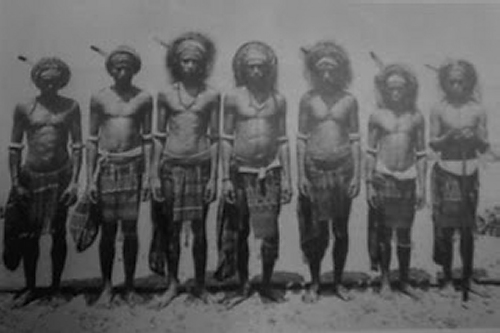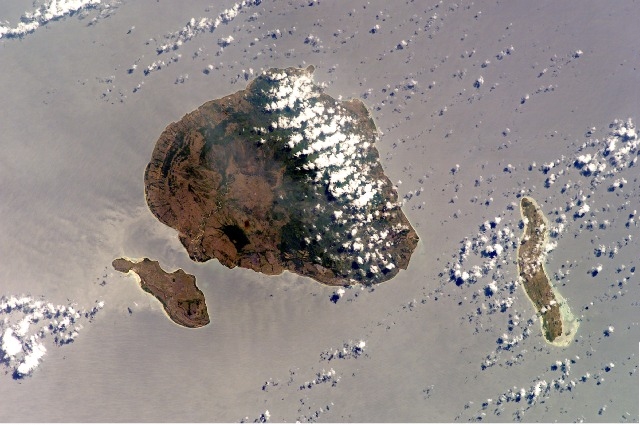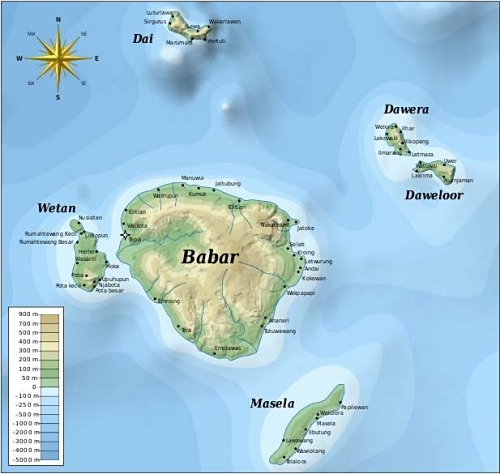Blessedly ignored little BabarBabar may be taken to refer to a single island or to the Babar group, part of the province Maluku. Located in the Banda Sea, between Timor to the west and the Tanimbar Islands to the east, the group consists of Babar, the largest island, surrounded by the five islets of Wetan, Dai, Dawera, Daweloor, and Masela. Babar is roughly circular, about 32 km in diameter and mostly hilly. Much of the island is covered with sub-tropical forests. Because the Babar group is very remote, lying far off the main trading routes, in the past it had little to offer to western invaders. The assertive, if not savage, nature of the population must also have helped it to be left in peace. Consequently, in colonial times it was mostly ignored, except by missionaries.There are very few ikat textiles (or in fact any kind of textiles) from Babar in western collections. Desk research shows up precious little. The Metropolitan Museum, Yale Art Gallery and the British Museum have nil pieces among them. The Tropenmuseum in Amsterdam has a single 'Babar', but that one is from Seram. Rijksmuseum Volkenkunde in Leyden has four. Rautenstrauch-Joest Museum in Cologne, with fourteen pieces, has the world's largest hoard of Babar textiles. We suspect that there are few more old pieces hidden in other European ethnological museums, but we may never know, as the documentation of several old collections is short of perfect, which some curators acknowledge but can do little to address given their limited funding. Another example of inadequate documentation: the beautiful sarong from the Wereldmuseum in Rotterdam identified as Babar in the exhibition catalogue Magie van de Vrouw is unmistakably from Kisar. This lapse is pointed out here, not to fault the esteemed curators, but to underscore the need for greater investment in the custody of treasures from other cultures that we have assumed guardianship of by our act of acquisition. Positive identification of Babar textiles has always been difficult, and in some cases may be impossible. The distant Babar archipelago, not having a strong tradition around ikat (no links to class, caste, or place, no taboos), was more open than most island groups to influence from cloths that were traded from other islands. Consequently, a Babar ikat may carry motifs that have sailed in from far, and thus signal a provenance that seems inescapable but is actually way-off. Our PC 196 with its motifs from two different regions on Flores is a case in point. What may help identification is the cloth's tonality. Babar ikat comes in a variety which is prodominantly brown and black, and another that is predominantly white on blue - a remarkably stark, dark indigo, which according to De Jonge and Van Dijk in Forgotten Islands is the result of an idiosyncratic dye preparation process. While (nearly?) everywhere else in the archipelago the indigo paste is left to ferment, in Babar the mixture is not allowed to come to fermentation, and used 'raw', producing this striking dark tone differentiates Babar cloths from those made in other parts of the region. In bridewealth exchanges on islands of the Babar group, the male gifts are mostly imported foreign goods, 'products of the sea', in the past including gold and trade cloths (today presumably including generators and electronic gadgets), whereas the female goods in ritual exchanges are 'products of the land', mainly ikat textiles. As sadly is often the case in these remotes places, foreign made goods are more highly valued than native products. The Indian printed and painted trade cottons known as basta stand in an ambiguous position: they are both textiles and hence female, and foreign objects, hence male. The general area these days generates interest from mining and oil companies, as both oil, gas, and gold are found on neighboring islands - which appears to bode ill for the island's future. The gold mines on Wetar have wreaked great destruction on the island, but according to news reports have hardly benefited the islanders, most of whom remain desperately poor. It is to be hoped that Babar will be spared a similar fate. If you have information on the island and particularly on its ikat textiles, please share your expertise. 
Women from Babar in the South Moluccas in traditional ikat sarongs. Photographer unknown, 1913, Creative Commons Licence. 
Men from Babar in the South Moluccas in traditional ikat sarongs. Photographer unknown, 1913, Creative Commons Licence. |



